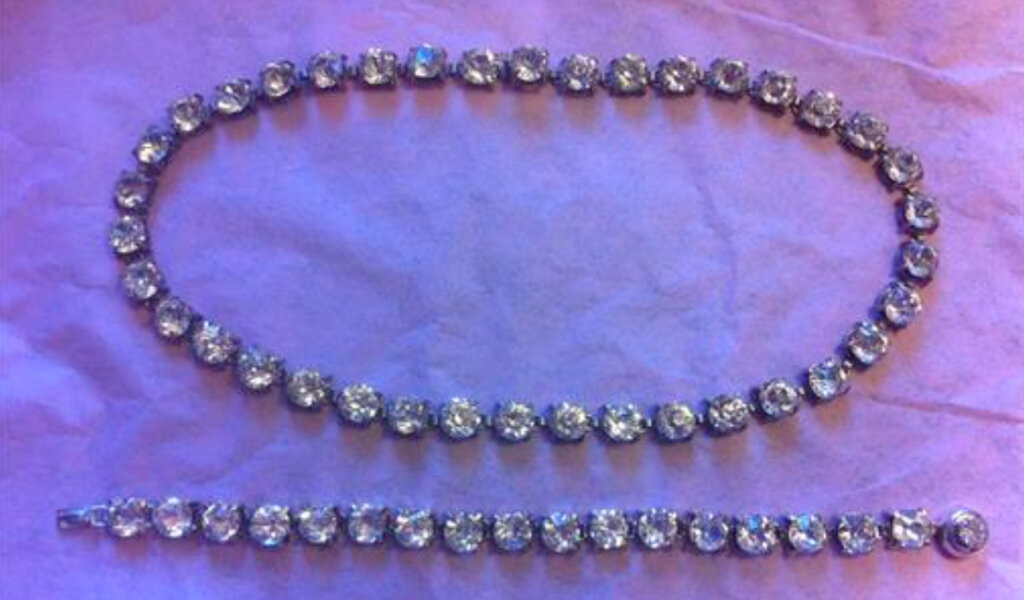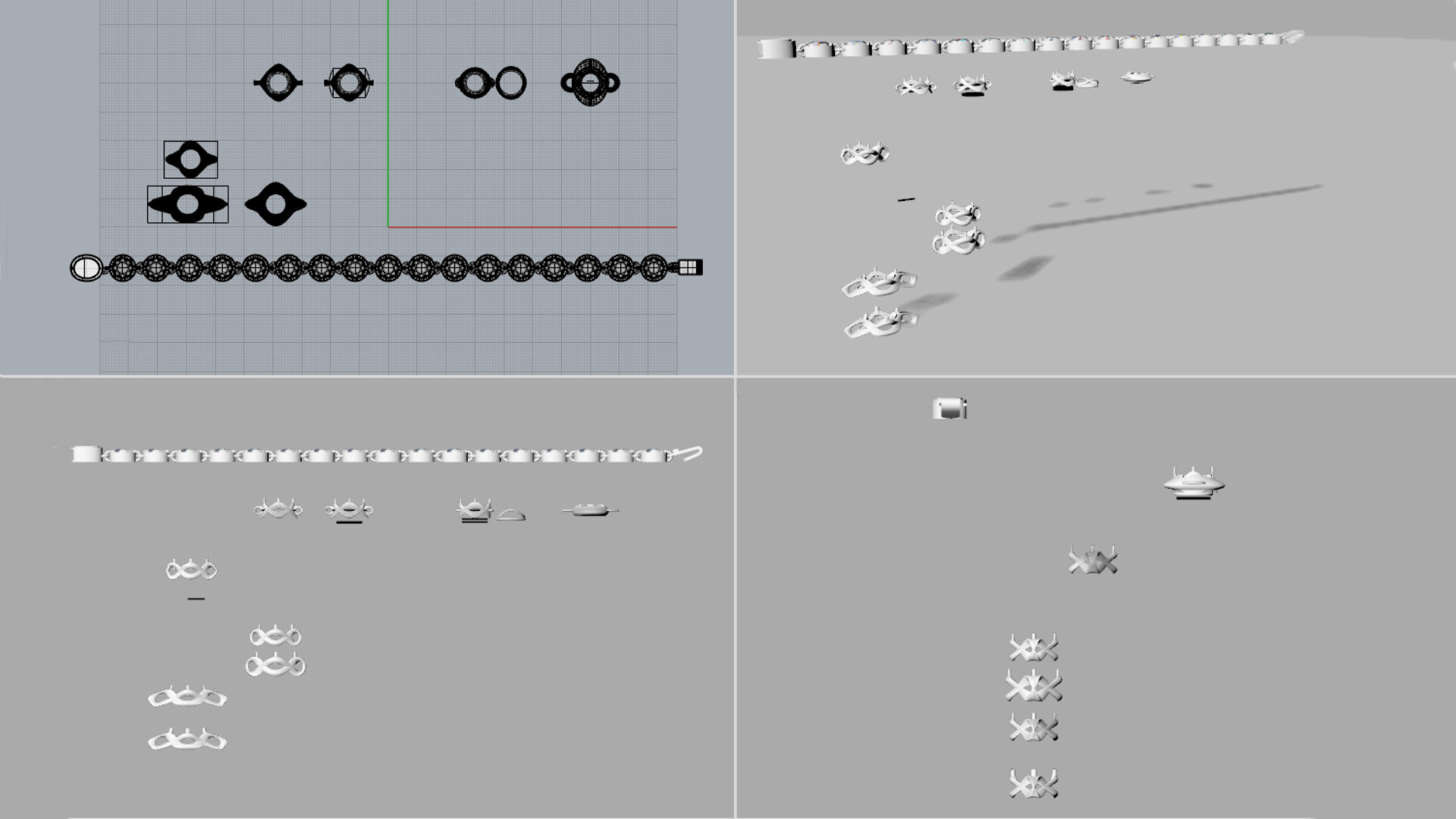CRYSTAL CUT STONE
Faceted stones that catch the light and reflects the light is eye catching. But how do we know what those bright colored stones are? Ruling out real gems’ stones, we are left with three possible options: Rhinestones, crystals or paste stones.
All three terms are still often used interchangeably and are available in multiple colors, shapes, and sizes. Of the three, paste stones are by far the most expensive and rare due to age and scarcity. As for more modern jewelry, crystals are a bit costlier than rhinestones due to the higher quality. Crystal stones differ from rhinestones in that crystal contains lead whereas glass does not. Therefore, the term “lead crystal” we have all seen on vases, goblets and the like. Lead glass, is a variety of glass in which lead replaces the calcium content of a typical potash glass. Lead glass contains typically 18–40% (by weight) lead oxide. Lead glass is often desirable for a variety of uses due to its clarity.[1]
The term lead crystal is, technically, not an accurate term to describe lead glass, as being an amorphous solid, glass lacks a crystalline structure. The use of the term lead crystal remains popular for historical and commercial reasons. The addition of lead oxide to glass makes for a much harder substance, raises its refractive index and lowers its working temperature and viscosity. The attractive optical properties of lead glass result from the high content of the heavy metal lead.
There probably isn’t a gemstone that glass has not been used to imitate. Glass has been used in jewelry for centuries, with examples found dating from 1500AD. It was so popular as a gem imitate in the 11th century, that the guild of goldsmiths in France was required to regulate the use of glass in jewelry. Their approach to do was to use gold for natural gems, silver for glass gems.
Up until the 17th century, glass was molded and lacked the sparkle of real gemstones. Rock crystals, which had had a higher dispersion, was often used to duplicate gems in preference to glass because it could be polished and faceted to some extent.
The real breakthrough for glass to be used in jewelry was when, in 1724, French jewel designer Georges Frédéric Strass came up with a leaded glass that he cut and polished with metal powder until it shone like a diamond. Named white ‘diamante’ or ‘strass’, the stones became very popular in Parisian high society. [2] This was at a time, when the use of wax candles in the evenings led to more social events being held at night and people wanted to be seen to be wearing sparkly gems. Paste stones, in a range of different colors, remained popular and acceptable in the 18th and 19th centuries. In 1840, a process to permanently foil pastes was discovered.
18th centuries paste stones had a small spot of black paint on the culet. It was said to be used to simulate the dark spot seen on the culet on a brilliant cut diamond. The most famous crystal stones are made by Swarovski. Daniel Swarovski created his cut crystal stones in 1892 by building a cutting machine that revolutionized the manufacture of stones so that each was precision cut resulting in a much finer quality and shinier stone.
original from National museum collection
garniture
Designed by: Unknown
Material: Silver-plated metal, silver, crystal glass
Size: 16 cm
Year: second half of the 19th century
Necklace and bracelet made of silver, and glass. The pieces are a part of a “granityr” of French garnish, which means 'accessory', 'ornament' is in arts and crafts one of several parts with a common form and decor composite whole.
The pieces are from the second half of the 1900 century and they have a classical minimal design that was common in that time. Genuine precious gem stones of this size were expensive and only the rich could afford them. When the crystal stones were introduced on the market it expanded the market and democratized the jewelry pieces that contained large stones.
These pieces show a development in design, where a simple and minimal design was used to highlight the stone and its reflexive properties. There is no variation in the stones and this shows that the maker had a clear vision to make one statement with this collection, to show how lustrous and radiant the stones are.
re-designed NECKLACE
RE-DESIGN
In this project I have chosen to use the stone of a watermelon quartz. “Quartz” is a common (and legitimate) descriptor in the bead industry, and although real quartz is prevalent in all areas of the world and there are many different types, disreputable vendors use “quartz” as kind of a catch-all description for any material that is mostly clear or translucent.[3]
Natural quartz stones will often have small inclusions present. that are not completely man-made, but (chances are) they have been manipulated in some way to enhance luster or color.Watermelon quartz is one of the most striking varieties of quartz. It is trigonal crystal structure manifest a bonanza of pink, green and white colors in a single crystal. It is from this flurry of colors that this amazing stone derives its name.
Just like the crystal stones are manmade stones created from led and glass, these watermelon quartzes are altered by humans to increase the intensity of the colors. To give these unique stones their fair space, I have chosen to set the stones in a setting that lets in a lot of light. This makes it easier for the stone to reflect light through the darker colors.
process picture
3d-model of redesign
Footnotes
[1] Benvenuto, Mark Anthony (24 February 2015). Industrial Chemistry: For Advanced Students. Walter de Gruyter GmbH & Co KG. ISBN 9783110351705.
[2] https://navettejewellery.org/2017/05/29/history-of-imitation-gemstones-paste-and-glass-gemstones/
[3] https://bluedoorbeads.wordpress.com/tag/watermelon-quartz/
This project was made possible with the support of



